Ernie Has a Nose for Science
By MANETTE KOHLER, DVM
What do Eastern Tiger Salamanders, Wild Parsnip rosettes, Blue-Spotted Salamanders and Gypsy Moth egg masses have in common? It just so happens they are all target scents that Field Work Partner Ernie is trained to detect, thus aiding in research and conservation work. A couple of these are “indicator species” which means that their populations are used to monitor trends affecting the environment or changes in particular ecosystems; two others are invasive species that are not native to the ecosystem and cause harm to the environment.
Laura Holder, co-founder and executive director for Midwest Conservation Dogs, Inc. (MCDI) owns Ernie, a two-year-old intact male Labrador retriever. Holder is a Certified Nose Work Instructor (CNWI) through the National Association of Canine Scent Work (NASCW) as well as a Certified Professional Dog Trainer – Knowledge Assessed (CPDT-KA) through the CCPDT. “The search for Ernie began after MCDI officially formed in January 2017,” says Holder. “I knew I wanted a Labrador retriever for this type of work due to their desirable temperament, size and working ability.” She found a breeder with a reputation for breeding dogs of sound mind and body and brought Ernie home in March, 2017 at ten weeks of age, and he immediately began his foundational scent-work training.
“At that age, the process is more of a game than work and included feeding him a portion of his meals as rewards,” explains Holder. “We started by sprinkling food on the ground in front of him, then progressed to food-puzzle toys and eventually challenged him by hiding food in the house and backyard,” she adds. His socialization outings also included scent games. “Once he turned 11 months old, he was introduced to his first target odor, the Blue-Spotted Salamander,” says Holder. “This was done by pairing the scent of the salamander with his favorite reward—freeze-dried meat!”
In past FETCH issues, this column has explored the wondrous olfactory capabilities of our long-time best friend, the domestic dog, covering such topics as cancer and stress detection, deciphering if an accelerant was used to start a fire and aiding law enforcement in searching for and apprehending suspects. It just makes sense that scientists and the conservation world would also utilize dogs’ amazing sense of smell. With up to 300 million olfactory receptors, they truly see their world through their noses. This ability, along with their innate desire to play and to work for rewards, makes them a perfect tool for conservation work and research.
Dogs can cover large areas and all sorts of challenging terrain including dense forests, vast prairie-like terrain and everything in between and they can detect a myriad scents including agricultural pests, apiary inspection and honey bee diseases, aquatic species and diseases, forestry diseases, fungi, insects, plants, scat and fur, even if those odors are masked by other odors.
“Every target scat is like gold to researchers,” according to the Conservation K9 Consultancy. Not only can the location and quantity of scat provide information on population counts, but they can identify individual animals including who is related to whom. Scat also provides information on the following: diet, hormone levels, pregnancy rates, stress, disease, and toxicology tests can reveal if the animal is being poisoned. This information helps conservationists to non-invasively keep tabs on endangered animals without the use of traps and tranquilizers and tagging.
Dr. Samuel Wasser, director of the Center for Conservation Biology and Conservation Canines Program, pioneered the use of dogs to locate wildlife scat over large areas in 1997 when Wasser and his team did a study utilizing dogs to locate grizzly bear scat over a 5200-km2 area in Alberta, Canada. The information they gleaned from the scat (sex, identity, stress levels, reproductive status) was supported by what they already knew from studying hair-snag and radio telemetry data on the bears, thus proving that dogs can be a valuable resource in conservation work including work in vast areas.
“A typical work day for Ernie starts with loading all the gear for the team,” says Holder. “We have to be prepared to be 100 percent self-sufficient in the field, including packing our own meals, safety gear and supplies. For a full day of work, we also pack a few gallons of water and snacks because Ernie is a lab after all and loves his treats,” adds Holder. Once on-site, Holder plans out how they’re going to cover the search area efficiently, and then they get started. “When he finds a target, he freezes in place and waits for me to approach and verify,” explains Holder. His paycheck for finding the target odor is food. “I take notes, drop a pin on the GPS tracker and/or drop a flag in the ground, and we continue on,” she adds. After a typical two to four hour on-site workday, they’re usually both covered in burrs and need to do full-body tick checks before heading to the showers. Then it’s time for the human part of the work: compiling the data.
Ernie also participates in Education Programs such as visiting schools, teaching kids about the role dogs play in the environmental conservation industry and the science behind scent work, and then Ernie gets to show off his sniffing super powers for the audience.
When not working, Ernie plays with his brother Oscar and snuggles with Laura and her husband as they watch TV. They also participate in agility classes so that Ernie can stay in tip-top shape for his fieldwork. “Typical of a Lab, he LOVES to chew on bully sticks, antlers and No-Hides as well as play with squeaky toys, and he can clear a frozen Kong in less than ten minutes,” shares Holder.
One of Ernie’s nicknames is Flying Ernie because he can jump straight up like Tigger! Other fun facts include these: Ernie loves stealing bananas from his humans; he’s starred in professional commercials, and he has a signature crook at the end of his tail, making it easy to pick him out of a doggy line-up.
For more information on Midwest Conservation Dogs, Inc. or to donate, visit www.midwestconservationdogs.com.

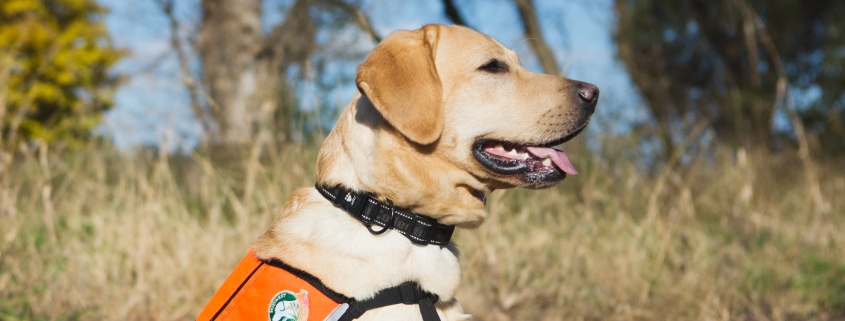
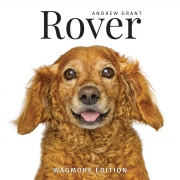
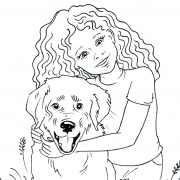
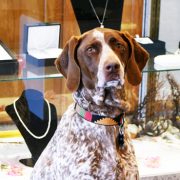
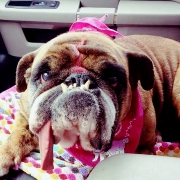



Thank you so much for covering our organization, Dr. Manette and FETCH magazine! We are always thankful for those that help spread the news about the exciting work of conservation dogs :)